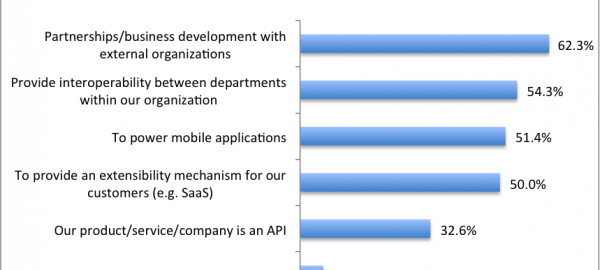You probably didn’t even notice. But you’ve benefited from this for years.
The lowly API is driving tons of growth in businesses small and large, connecting systems and sharing information behind the scenes.
What’s an API?
API is short for Application Programming Interface.
Er, so what does that mean?
Basically, it’s an authorized and secure direct connection between two databases of information.
For example, at The Youth Cartel site, any time you fill out a form it asks you if you’d like to join our email list. If you check the box, your name and email address are automatically added to our email list. Back in the day, before APIs, I used to do that manually. So every once in a while I’d have to download a list of people who asked to join our email list then import those people into the email list, mapping each field appropriately.
In the opening I said that the API is driving growth for lots of businesses. That’s true because APIs are used for all sorts of different things.
- Single sign-ons, signing into a website with Facebook, Twitter, etc. That’s all done via API. For example, we added the ability for people to sign-on and pay with their Amazon.com account… and lots of people use that and love it.
- Data on transactions, like when you buy something online, is automatically (and within PCI compliance) shared with a company CRM. (Customer Relationship Managers) By feeding in lots of data from different ways you interact with a customer, it’s easier to know who your best customers are, what they like, etc.
- Many SaaS’s offer API connections so that I can maximize my efficiency and not duplicate efforts. So my accounting system talks to my credit card processor and Mailchimp (email marketing) is connected to my store for reporting purposes.
- Many mobile apps, where the most growth is happening worldwide, make extensive use of API connections to get your account created faster, collect useful information about how you’re using the app so they can make it better, and make it so you can use your favorite app the way you want to use it. (Not everyone uses the same app the same way!)
How Does it Work?
Let me give you the most simple way to look at this.
Basically, a software engineer creates a way for authorized users to have some level or direct access to the database and interface with a third-part software application.
So… most software stores data in a database, right? And the engineers code to front-end (stuff you see and use) to put data into the right places. Think of it as a map.
All an API does is publishes the map to certain parts of it’s database. Usually, that’s user activity, login information, transactions, stuff like that.
Once an API connection is established the information flows out of the host application and into the second application automatically. (Or on an automated cycle)
For example, Mailchimp can send email marketing information to a CRM like Salesforce. (Let’s say a company uses an online store that also connects to Salesforce.) So if you have a customer service rep answering questions and a person calls in to ask about a new product email… When they pick up the phone, the incoming number will look-up their account, show the rep all of their purchases, and when the caller says “I have a question about an email I just received…” the rep can click on a tab which shows them which email campaigns they’ve received, if they opened them, what they clicked on, etc.
That allows the service rep to see exactly what the customer sees. And the rep is then able to log that call, it’s resolution, and even see if the customer went ahead and bought the thing they received an email about.
This is real-time data sharing that allows companies to move faster, smarter, and serve customers better.
And all of that happens behind-the-scenes, automatically, without the need for status meetings or for the customer to tell their life story.
For the customer… it’s great. They aren’t asked to create 5 different accounts for 5 different systems for the same company. To them, they just engage with you and it’s all natural/intuitive.
And for the company… it’s great. They can look at stuff from both macro and micro levels to collect the information they need to make decisions going forward. And APIs allow you to do that automatically and ridiculously cheap. (Most APIs aren’t even an extra cost at this point, just kind of an expectation for a SaaS these days.)
What’s this got to do with me?
I’m guessing that 90% of the people who just read this have no idea or care about an API.
But we’re learning lots of things about the benefits of API that benefit you no matter what you do in life.
- People like things that are automatic, intuitive, and fast.
- Speed + ease of use are more important than just about anything.
- No one wants to share their information, but everyone wants to be known.
- We are all in the trust business.
- What happens behind the scenes is the #1 way to reduce expenses.
- What happens behind the scenes is the #1 way to increase the benefit to your participants, customers, clients, etc.
- Growth = Profits – Expenses (Shocking to me how many organizations lose sight of that!)
CHALLENGE: I’ve talked about something that’s a computer technology, an API. If you work in a people-based ecosystem, what are ways you can build a “human API” into your work so that the behind the scenes systems can automatically interface better?

Leave a Reply